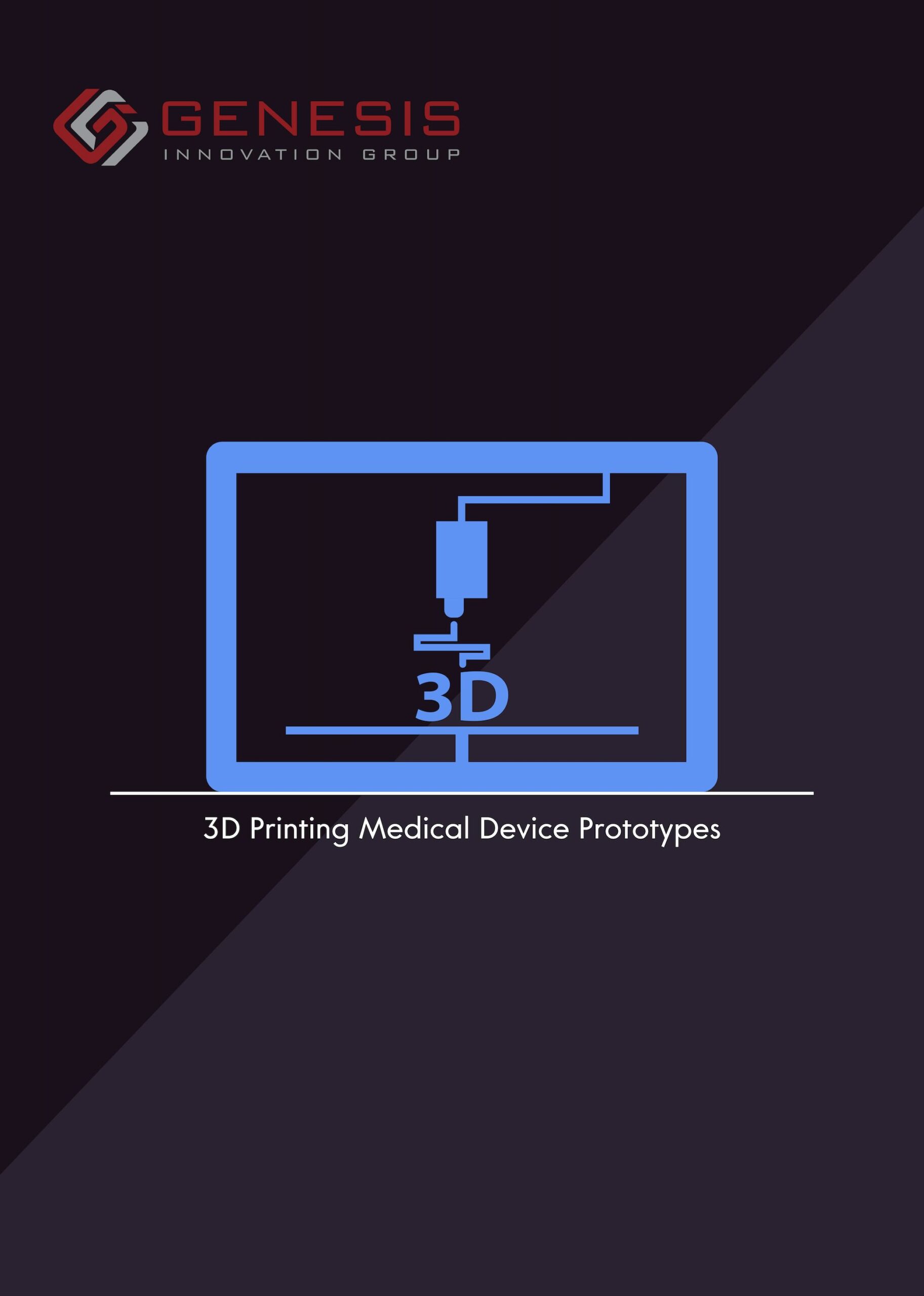
3D Printing Medical Device Prototypes
Our team at Genesis is thrilled with the many opportunities 3D Printing Medical Device Prototypes affords us.
We are able to design a prototype in our CAD system, a parametric modeler called Solid Works, and within just a few days, we have a prototype of an instrument or implant in hand.
But the real genius in 3D printing is the ability to iterate multiple times in order to perfect a prototype before bringing the design to a surgeon’s attention.
Sometimes a prototype will look great on CAD, but after printing it and holding it in our hands, we’ll notice an issue. Since printing plastic is so inexpensive, we can iterate and dial the design even up to 10 times, to get the part exactly right.
Our CAD system allows us to easily drag and drop our prototypes in order to distribute them to numerous companies that will do the printing for us. For now, the benefit of using online vendors is that we’re able to explore potential production methods for manufacturing through our vendor stream. This is important because not all 3D printing is the same.
Our engineering group possesses a significant amount of 3D printing expertise which helps us recognize what will and won’t result in a good 3D printed part. For instance, Jeff Ondrla has experience running and managing a 3D printing department at a major orthopedic-related job shop.
Benefits of 3D Printing Medical Device Prototypes and Custom Items
For surgeons who want specialty items, we can create one custom item that’s just right for them. In the old days, this was more difficult.
As an example, Jeff Ondrla once spent a solid week creating a set of forceps for a surgeon, built to the exact specifications the surgeon gave him. However, when Jeff handed him the instrument, the surgeon said, “These are too small.”
Today, such things can be cheaply printed out of plastic, tested, and then printed out of stainless steel after they’re known to work.
3D printing allows us to design things that we could never make the traditional way.
For instance, with a 3D printer, we can make porous code structures on an implant which look similar to sandpaper. We can design our own pore sizes and many other details that would be impossible without 3D printing.
Turnaround Time for 3D Printing Medical Device Prototypes
The typical turnaround time from concept to designing it in Solid Works to holding the prototype instrument or implant depends on the complexity of the part we want to print.
When someone requests a variation on a design we already have, we can usually model those changes in a couple of hours to a couple of days.
Once we have a consensus from the surgeon requesting the tool, the turnaround time can be as few as 3 to 5 days for plastic and around 10 days for metal.
We love that we can go to a surgeon design meeting and in one month have a part in-hand. Traditional methods take between 6 to 8 weeks.
Materials Used in 3D Printing Medical Device Prototypes
There are a number of materials we use when 3D printing. The main plastic is a biocompatible nylon.
However, the plastic world is constantly evolving and there are too many different plastics to name them all.
There are even 3D printed fiber-embedded plastics resembling fiberglass.
The standard in medical grade stainless steel is 17/4 which is readily available for printing, as is titanium for implants. Cobalt chrome is not as readily available but does exist.
When someone requests a variation on a design we already have, we can usually model those changes in a couple of hours to a couple of days.
Once we have a consensus from the surgeon requesting the tool, the turnaround time can be as few as 3 to 5 days for plastic and around 10 days for metal.
We love that we can go to a surgeon design meeting and in one month have a part in-hand. Traditional methods take between 6 to 8 weeks.
The Future of 3D Printing In The Medical Device Industry
We believe that in the near future, 3D printing will bring us custom sports medicine and orthopedics implants specific to each person.
Currently, when a person needs a shoulder replacement, the surgeon has to use his expertise to find the best fit from the different sizes the manufacturers provide them. With the future of 3D, we may soon be able to bring a perfect fit.
Genesis is constantly watching how the technology in the 3D printing world is evolving and we’re trying to use the best equipment and materials available to us.
Interested In Working With Us?
Please fill out the information below, and someone on our team will be in touch.
